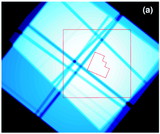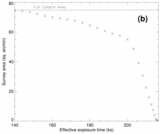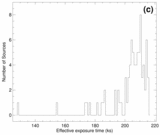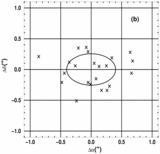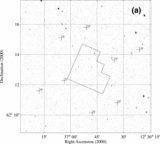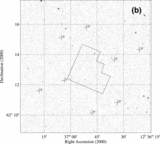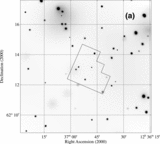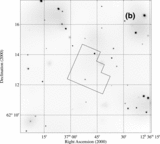Image Details
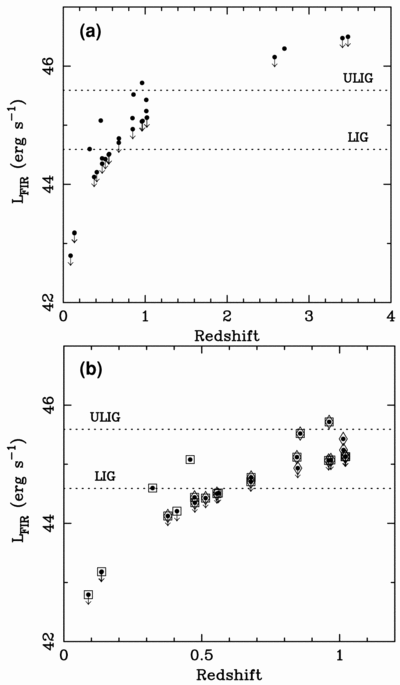
Caption: Fig. 15.
FIR luminosity, as estimated from the FIR‐radio correlation, vs. redshift for (a) all our Chandra sources with redshifts and (b) only those sources with ﹩z=0{\mbox{--}} 1.2﹩. When sources are not detected at 1.4 GHz, we calculate upper limits following § 3 of R00. The two horizontal dotted lines show the luminosity thresholds for luminous FIR galaxies (﹩L_{\mathrm{FIR}\,}> 10^{11}﹩ L⊙) and ULIRGs (﹩L_{\mathrm{FIR}\,}> 10^{12}﹩ L⊙). In panel (b) markers with squares (diamonds) around them indicate that the corresponding source has been detected by Chandra in the soft band (hard band); we show a restricted redshift range in panel (b) to minimize symbol crowding. The two sources in panel (a) with ﹩z=2{\mbox{--}} 3﹩ are detected in both the soft and hard bands, and the two sources with ﹩z> 3﹩ are only detected in the soft band.
Copyright and Terms & Conditions
© 2001. The American Astronomical Society. All rights reserved. Printed in U.S.A.


